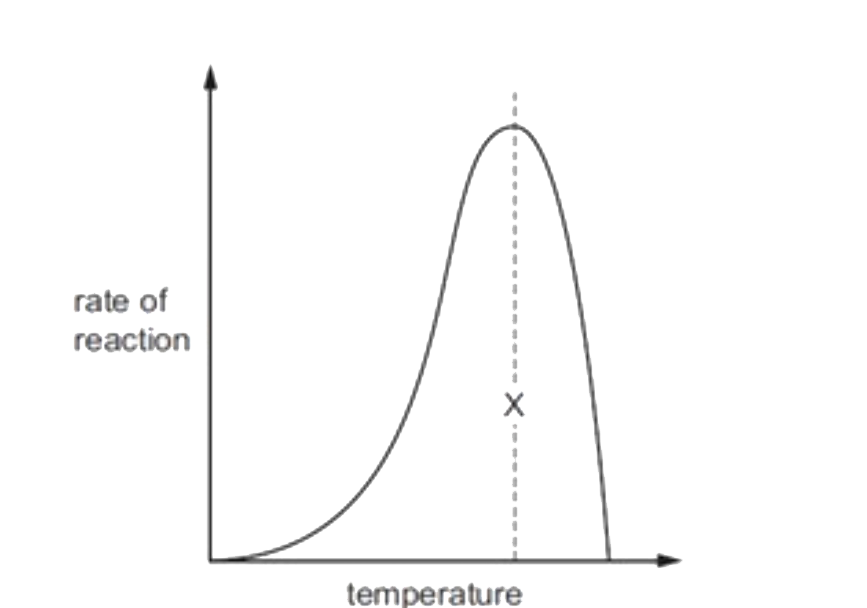Does inhibitor alter the structure of enzyme?
The correct Answer is:No
Step-by-Step Solution
1. Understanding Enzyme Inhibition: Enzymes are biological catalysts that speed up chemical reactions. Inhibitors are substances that decrease or stop the activity of enzymes.
2. Types of Inhibitors: There are two main types of enzyme inhibitors:
- Competitive Inhibitors: These inhibitors resemble the substrate and compete for the active site of the enzyme. When a competitive inhibitor binds to the enzyme, it forms an enzyme-inhibitor complex, preventing the substrate from binding. However, this type of inhibition does not alter the structure of the enzyme itself.
- Non-Competitive (Allosteric) Inhibitors: These inhibitors bind to a site other than the active site (known as the allosteric site). When a non-competitive inhibitor binds, it causes a conformational change in the enzyme's structure. This change can prevent the substrate from binding to the active site, thus inhibiting the enzyme's activity.
3. Conclusion: Based on the types of inhibitors, we can conclude that:
- Competitive inhibitors do not alter the structure of the enzyme.
- Non-competitive (allosteric) inhibitors do alter the structure of the enzyme, preventing substrate binding.
4. Final Answer: Yes, some inhibitors do alter the structure of the enzyme, particularly non-competitive inhibitors that bind to the allosteric site.
- Competitive Inhibitors: These inhibitors resemble the substrate and compete for the active site of the enzyme. When a competitive inhibitor binds to the enzyme, it forms an enzyme-inhibitor complex, preventing the substrate from binding. However, this type of inhibition does not alter the structure of the enzyme itself.
- Non-Competitive (Allosteric) Inhibitors: These inhibitors bind to a site other than the active site (known as the allosteric site). When a non-competitive inhibitor binds, it causes a conformational change in the enzyme's structure. This change can prevent the substrate from binding to the active site, thus inhibiting the enzyme's activity.
- Competitive inhibitors do not alter the structure of the enzyme.
- Non-competitive (allosteric) inhibitors do alter the structure of the enzyme, preventing substrate binding.
Topper's Solved these Questions
- ENZYMES BOOK - ICSECHAPTER - ENZYMES EXERCISE - REVIEW QUESTIONS ( SHORT ANSWER TYPE QUESTIONS)
20 Videos
- ENZYMES BOOK - ICSECHAPTER - ENZYMES EXERCISE - REVIEW QUESTIONS (LONG ANSWER TYPE QUESTIONS)
6 Videos
- ENZYMES BOOK - ICSECHAPTER - ENZYMES EXERCISE - REVIEW QUESTIONS ( MATCH THE FOLLOWING)
1 Videos
- DIGESTION AND ABSORPTIONBOOK - ICSECHAPTER - DIGESTION AND ABSORPTIONEXERCISE - REVIEW QUESTIONS ( VIII. LONG ANSWER TYPE QUESTIONS )
6 Videos
- EXCRETORY PRODUCTS AND THEIR ELIMINATIONBOOK - ICSECHAPTER - EXCRETORY PRODUCTS AND THEIR ELIMINATIONEXERCISE - NCERT EXERCISES WITH ANSWER (DIFFERENTIATE BETWEEN)
11 Videos
Similar Questions
Knowledge Check
The inhibitor which closely resembles the substrate in its molecular structure and inhibits the enzyme activity by biniding to the active site of the enzyme is called
Afeedback inhibitorBnon-competitive inhibitorCcompetitive inhibitorDallosteric modulator.
List the different ways by which mutations alter the structure of the chromosomes. Illustrate any one of them by a diagram.
View SolutionInhibitor effects
View SolutionThe graph shows the effect of temperature on the rate at which the enzyme in a biological washing powder digests and removes fruit juice stains .

Which statements explain the shape of the graph at temperatures higher than X ?
I. Bonds are broken between the R groups of the amino acids in the polypeptide chains of the enzyme.
II. There are more collisions between the enzyme and its substrate.
III. The tertiary structure of the enzyme is altered.
Iv. The shapes of the active site and the substrate are no longer complementary .
View SolutionA: Enzymes are special types of proteins.
R: Those substances which interfere with the action of enzymes are called inhibitors.
View SolutionAssertion : The inhibition of activity of succinic dehydrogenase by malonate which closely resembles the substrate succinate in structure is the example of competitive inbhibition.
Reason : Competitive inhibition is the inhibition of enzyme activity when inhibitor closely resembles the substrate, in its molecular structre.
View SolutionThe similarities in composition and structure of protoplasm, enzymes, hormones, DNA, blood etc indicates that:
View SolutionEnzymes which catalyse reaction involving change in the structure of a molecule are
View Solution
